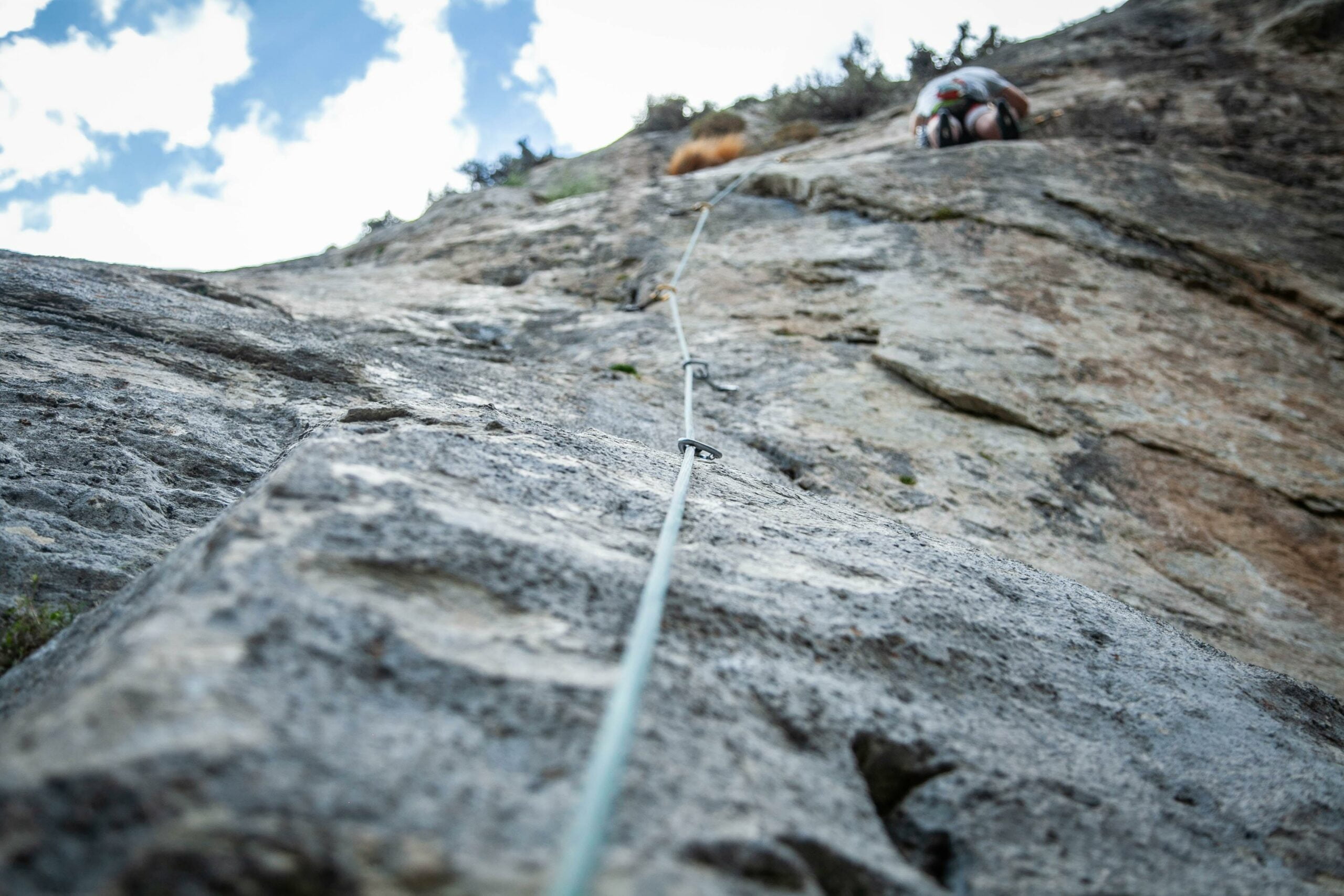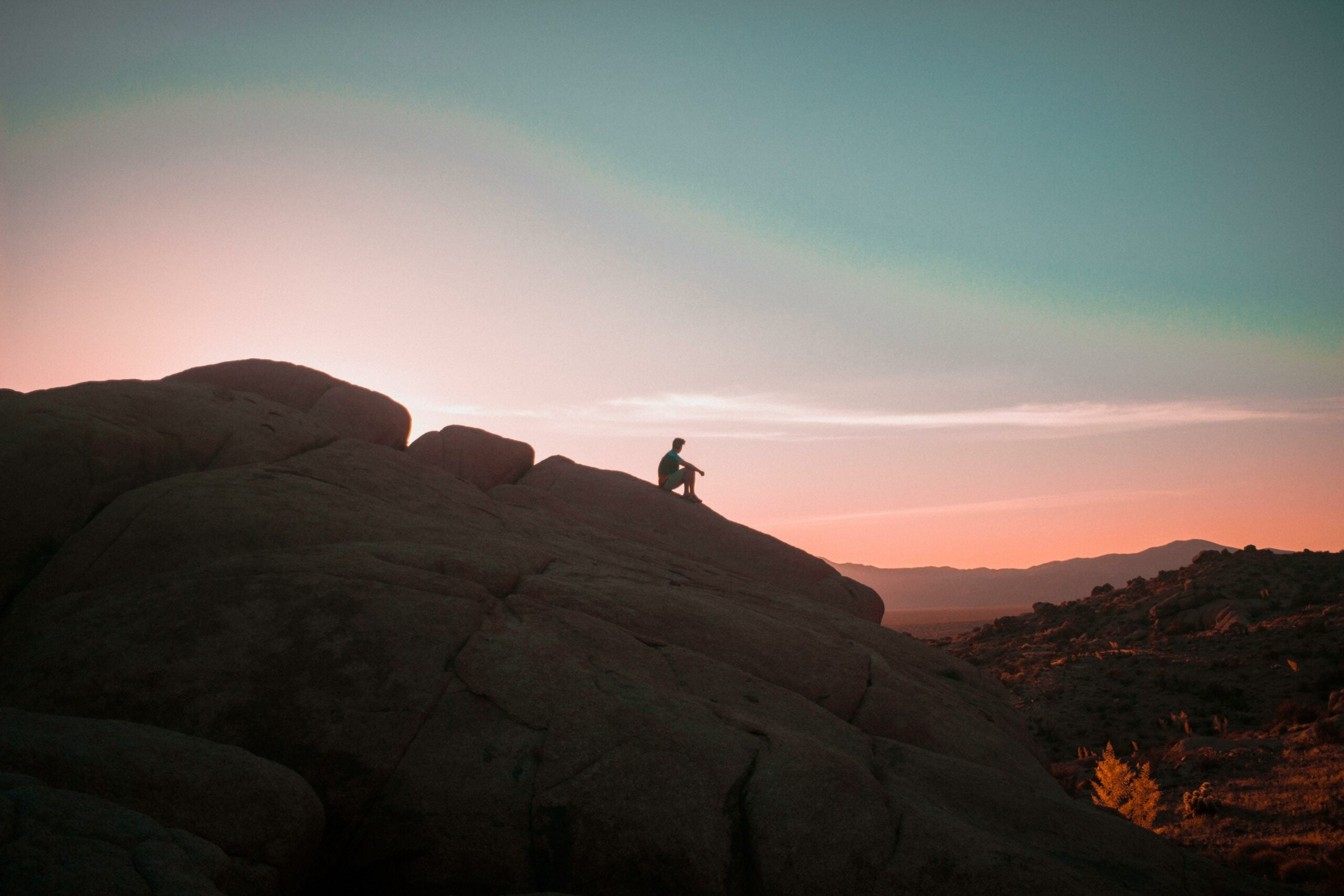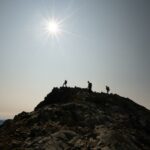Are you ready to embark on an exhilarating journey into the fascinating world of mountain climbing? Get ready to uncover an array of fun facts and insights that will leave you awestruck. From the adrenaline-pumping adventures to the awe-inspiring landscapes, mountain climbing has captured the hearts of adventurers for centuries. In this article, we will delve into the lesser-known aspects of this thrilling pursuit, weaving together stories of conquest, exploration, and the peculiar traditions that make this sport truly unique. So, fasten your harnesses and prepare to be enthralled by the intriguing world of mountain climbing.

Fun Facts About Mountain Climbing
Welcome to a world of adventurous thrills and fascinating insights into the world of mountain climbing! From mysterious first summits to deadly mountains and quirky traditions, this article will unveil some truly captivating fun facts about mountain climbing.
Women Who Climbed K2 Were Believed to be Cursed
Did you know that women who climbed K2, the second-highest mountain in the world, were believed to be cursed? It may sound strange, but this superstition was prevalent among the locals. They believed that the mountain’s wrath would be unleashed upon anyone who dared to defy its towering summit. Thankfully, this outdated belief has been debunked, and women climbers have successfully conquered K2 to prove that curses hold no power over determination and skill.
“Unleashing the spirit of adventure, women climbers shattered the curse of K2, conquering the mountain and pushing boundaries.”
A Man in a Wheelchair Climbed Mount Kilimanjaro Twice
Prepare to be amazed by the incredible story of a man in a wheelchair who defied all odds and climbed Mount Kilimanjaro not once, but twice! Despite facing physical limitations, he showcased indomitable willpower and determination. This remarkable feat serves as a powerful reminder that the human spirit knows no boundaries and that with determination, nothing is impossible.
“In the face of seemingly insurmountable challenges, the power of human will and inner strength triumphed, propelling a man in a wheelchair to conquer Mount Kilimanjaro twice.”
Mount Everest: The Highest Open Grave in the World
Mount Everest, the tallest mountain on Earth, holds a haunting distinction. It is often referred to as the highest open grave in the world. Over the years, the mountain has claimed the lives of numerous adventurers, leaving their bodies frozen eternally in its icy embrace. This somber fact reminds us of the unrelenting danger and risks present in the pursuit of conquering the world’s tallest peaks.
“Amidst Everest’s majestic beauty lies a solemn truth, as the mountain stands as a poignant reminder of the daring individuals who lost their lives pursuing their mountaineering dreams.”
Matterhorn: Danger in Popularity
Matterhorn, located on the border between Switzerland and Italy, is renowned for its breathtaking beauty. However, being popular comes with its own dangers. The mass appeal of Matterhorn attracts countless climbers, resulting in congested routes and increased risks. The mountain demands the utmost respect and caution, requiring climbers to navigate treacherous terrain with precision and skill.
“As popularity grows, so does the need for heightened vigilance. The allure of Matterhorn masks the inherent risks that climbers must face, reminding us that popularity can sometimes breed danger.”
Mauna Kea: Taller Than Mount Everest
Prepare to have your perceptions challenged as we delve into the intriguing fact that Mauna Kea in Hawaii is taller than Mount Everest. While Everest is often deemed the tallest mountain due to its elevation above sea level, Mauna Kea boasts an astonishing height when measured from its base at the ocean floor. This mind-bending fact unveils the wonders of our planet and highlights the diverse ways in which mountains can be measured.
“Mountains hold their secrets close, challenging what we think we know. Mauna Kea, hidden beneath the waves, claims its place as a true giant, reminding us to explore beyond the expected.”
Everest’s First Summit: The Shrouded Mystery
As we explore the captivating history of Everest, we stumble upon a mystery surrounding its first summit. While Sir Edmund Hillary and Tenzing Norgay are celebrated as the first to conquer Everest, there are rumors and theories that earlier attempts may have been made by mountaineers who mysteriously disappeared. This enigma adds a touch of intrigue and mystique to the mountain’s legacy.
“Tinged with a sense of adventure and elusive knowledge, Everest’s first summit stands as an unsolved riddle, inviting us to unravel the secrets hidden in its misty peaks.”
Annapurna: The World’s Deadliest Mountain
Annapurna, part of the great Himalayan range, has earned a chilling reputation as the world’s deadliest mountain. The treacherous slopes, unpredictable weather, and challenging climbing routes have claimed the lives of many brave adventurers. Climbing Annapurna demands an unparalleled level of skill, knowledge, and preparation, making it a formidable challenge even for the most experienced climbers.
“With its icy grip and unforgiving temperament, Annapurna commands the utmost respect, reminding us that the pursuit of adventure does not come without risk.”
Climbing Everest: A Tale of Triumph and Tragedy
Every year, approximately 1,200 people attempt to conquer Mount Everest, but only about half of them succeed in reaching the summit. The allure of standing on top of the world draws climbers from around the globe, seeking to fulfill their dreams. However, the mountain doesn’t surrender its glory easily, and tragic stories of those who have lost their lives remind us of the immense challenge and risks climbers face.
“Amongst the triumphs, the mountain claims its toll, reminding us that Mount Everest is an unforgiving force that only the most prepared and determined can overcome.”
Frozen Witnesses: The Silent Reminders on Everest
As you ascend the treacherous slopes of Everest, a haunting sight awaits you. Hundreds of bodies, frozen solid, serve as solemn witnesses to the mountain’s unforgiving nature. These climbers made the ultimate sacrifice, leaving behind a chilling reminder that conquering Everest is not a feat to be taken lightly. Their presence is a stark testament to the dangers and sacrifices entwined with the pursuit of extreme adventure.
“Frozen in time, these brave souls bear testament to the indomitable spirit and the immense price they paid while pursuing their mountaineering dreams.”
Venture into the realm of mountain climbing, where the thrill of adventure intertwines with history, myth, and the resilience of the human spirit. From cursed mountains to courageous achievements, every step taken towards these towering summits unveils new wonders and insights into the remarkable world of mountain climbing. So, are you ready to embark on your own mountain-adventure, armed with these engaging fun facts?
“As we peel back the layers of mystery and explore the heart of mountain climbing, we discover that the pursuit of adventure holds within it a treasury of captivating stories and lessons waiting to be unveiled.”
Rock climbing is an exhilarating and challenging sport that pushes individuals to their physical and mental limits. If you are fascinated by the idea of scaling towering cliffs and conquering gravity, then you need to learn some jaw-dropping facts about rock climbing. Did you know that rock climbing originated in the late 19th century in Europe? It has since evolved into various disciplines, such as trad climbing, sport climbing, and bouldering. Curious to uncover more about the adrenaline-fueled world of rock climbing? Click here to discover some mind-boggling facts about rock climbing: facts about rock climbing. Prepare to be amazed as you delve into the awe-inspiring world of vertical adventures!
Fun Facts About Mountain Climbing
Ready to discover some rock climbing fun facts that will blow your mind? Get your adrenaline pumping and explore the fascinating world of mountain climbing. Did you know that rock climbing is not only a thrilling sport but it also has numerous health benefits? From improving your muscular strength to boosting your mental focus, this activity will leave you feeling invigorated. But wait, there’s more! If you’re interested in learning about interesting facts about mountain climbing, you won’t want to miss out on these jaw-dropping tidbits. Head over to our Rock Climbing Fun Facts page and prepare to be amazed.
Now, let’s dive into the realm of mountain climbing. For those seeking an adrenaline rush and a life-changing experience, mountain climbing is the perfect choice. Discover hidden insights and intriguing stories from climbers who have conquered the world’s most treacherous peaks. If you’re craving some mind-boggling facts, look no further than our Interesting Facts About Mountain Climbing collection. Prepare to be captivated as we reveal the extraordinary achievements and challenges faced by mountaineers throughout history.
But wait, there’s more! If you’re still hungry for amazing facts about rock climbing, our Amazing Facts About Rock Climbing section is the place to be. Uncover the secrets behind this exhilarating sport and learn about the incredible feats accomplished by rock climbers around the world. Are you ready to be astounded?
So, whether you’re a seasoned climber or simply fascinated by the world of rock climbing, these links will take you on a journey full of excitement and wonder. Don’t miss out on the opportunity to explore the captivating world of mountain climbing. Click on the links above and let the adventure begin!
What Happens to Your Body at the Top of Mount Everest
[youtube v=”daV-tMnZeIw”]
At an altitude of 8,848 meters, Mount Everest poses immense challenges for climbers due to the thinning air and reduced oxygen levels. In this article, we will explore how the human body adapts to high altitudes and the risks associated with climbing Mount Everest.
When ascending to high altitudes, the lack of oxygen can lead to altitude sickness, also known as AMS, which manifests as symptoms like headaches, fatigue, and nausea. However, the human body has remarkable adaptive mechanisms that kick in to counteract the effects of high altitude.
Within minutes of reaching an altitude of 1,500 meters, the body’s chemoreceptors in the carotid artery sense the low oxygen pressure in the blood. This triggers an increased rate and depth of breathing, allowing the body to combat hypoxia. The heart rate also increases, pumping oxygenated blood throughout the body to compensate for the decreased oxygen availability.
With continued exposure to high altitude over a few weeks, the body undergoes further changes to enhance its ability to function in low oxygen environments. The volume of plasma in the blood decreases, leading to an increase in hemoglobin concentration. Hemoglobin, a protein in red blood cells, carries oxygen, and higher hemoglobin levels enable each milliliter of blood to transport more oxygen. Additionally, the heart rate remains elevated, ensuring adequate circulation of oxygen-rich blood.
Respiratory adaptation also plays a crucial role in acclimatization. Breathing becomes deeper, allowing for more efficient oxygen exchange in the lungs. These adaptive changes, along with an increase in the number of red blood cells, facilitate the delivery of oxygen to all the body’s cells.
However, it is important to note that even with acclimatization, climbing too high too quickly can still be extremely dangerous. At altitudes above 3,500 meters, the body is under significant stress. Blood vessels in the brain dilate to increase blood flow, while at the same time, blood vessels in the lungs constrict due to low oxygen levels. These conditions, known as high-altitude cerebral edema (HACE) and high-altitude pulmonary edema (HAPE), respectively, can be life-threatening if not promptly treated.
It is worth mentioning that some individuals, such as Tibetans and South Americans accustomed to living at high altitudes, have a genetic advantage in tolerating these harsh conditions. However, even they are not entirely immune to the risks associated with extreme altitudes.
In conclusion, the human body possesses remarkable adaptability to survive at high altitudes. Through a series of physiological changes, including increased hemoglobin concentration, elevated heart rate, and improved respiratory function, the body can endure low oxygen environments for extended periods. Nonetheless, climbing Mount Everest or other high-altitude peaks should never be taken lightly, and careful acclimatization and proper medical care are essential to minimize the risks involved.
“The human body has incredible mechanisms to adapt to the challenges of high altitude, but climbing Mount Everest still requires careful preparation and awareness of the risks involved.”
FAQ
What is the curse associated with women who climb K2?
The belief that women who climb K2 are cursed is a myth. There is no evidence to support such claims, and many women have successfully climbed the mountain without experiencing any negative consequences. It’s important to focus on the achievements and capabilities of female climbers rather than perpetuating unfounded superstitions.
Has a man in a wheelchair climbed Mount Kilimanjaro?
Yes, a man in a wheelchair has indeed climbed Mount Kilimanjaro not once, but twice. This incredible feat showcases the determination, strength, and adaptability of individuals with disabilities. It serves as an inspiration to both disabled and able-bodied climbers, highlighting the power of the human spirit.
Why is Mount Everest considered the highest open grave in the world?
Mount Everest is known as the highest open grave in the world due to the numerous bodies that remain on the mountain. Harsh weather conditions, avalanches, and treacherous terrain make it difficult to retrieve the bodies of climbers who have lost their lives. It serves as a stark reminder of the dangers and risks associated with mountaineering.
Is the Matterhorn dangerous because of its popularity?
Yes, the Matterhorn can be dangerous, partly due to its popularity. The high number of climbers attempting to summit the mountain creates congestion and increases the risk of accidents. The narrow ridges and steep faces also make it a challenging climb, demanding technical skills and experience. It’s crucial for climbers to be well-prepared and follow safety protocols to mitigate potential hazards.
Is Mauna Kea taller than Mount Everest?
No, Mauna Kea is not taller than Mount Everest. While Mauna Kea is actually greater in height when measured from its base on the ocean floor, Mount Everest holds the title for the highest peak above sea level. Everest’s elevation of approximately 29,032 feet (8,848 meters) surpasses Mauna Kea’s elevation of 13,803 feet (4,207 meters) above sea level.
- Unlock Water’s Symbolism: A Cross-Cultural Exploration - April 20, 2025
- Identify Black and White Snakes: Venomous or Harmless? - April 20, 2025
- Unlocking Potential: Origins High School’s NYC Story - April 20, 2025















